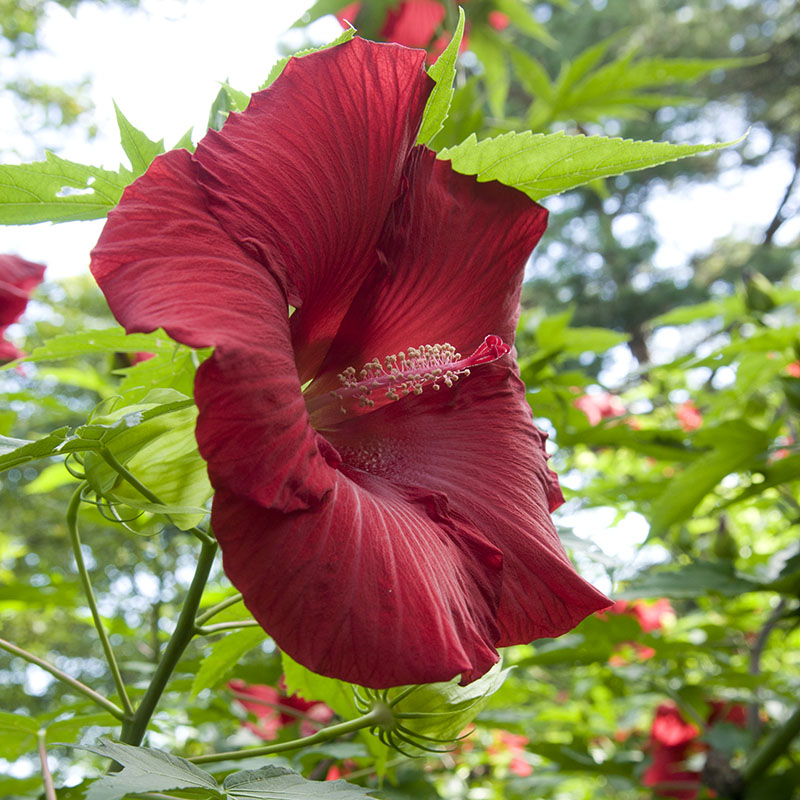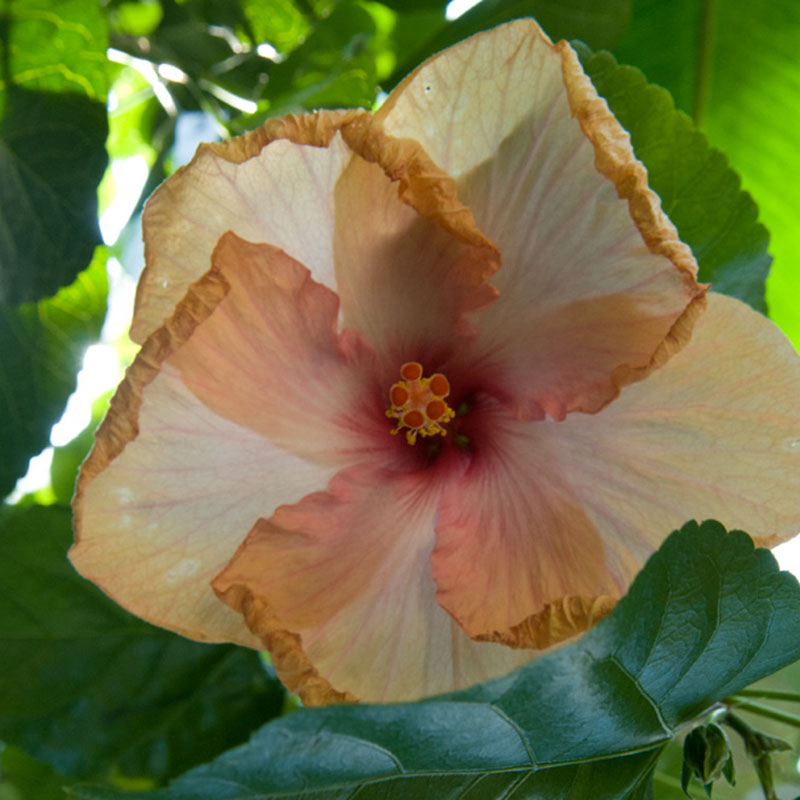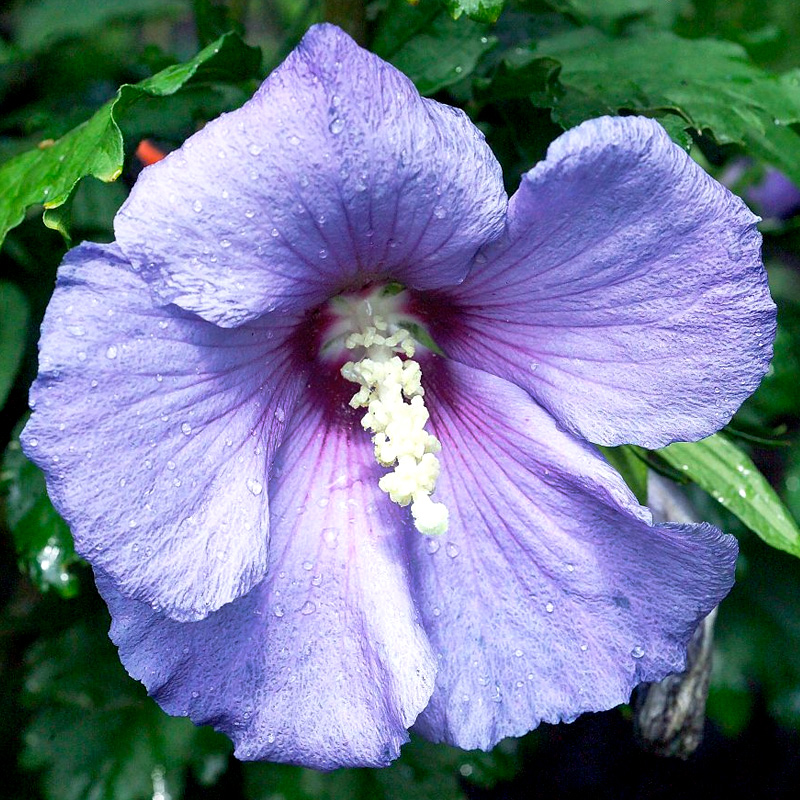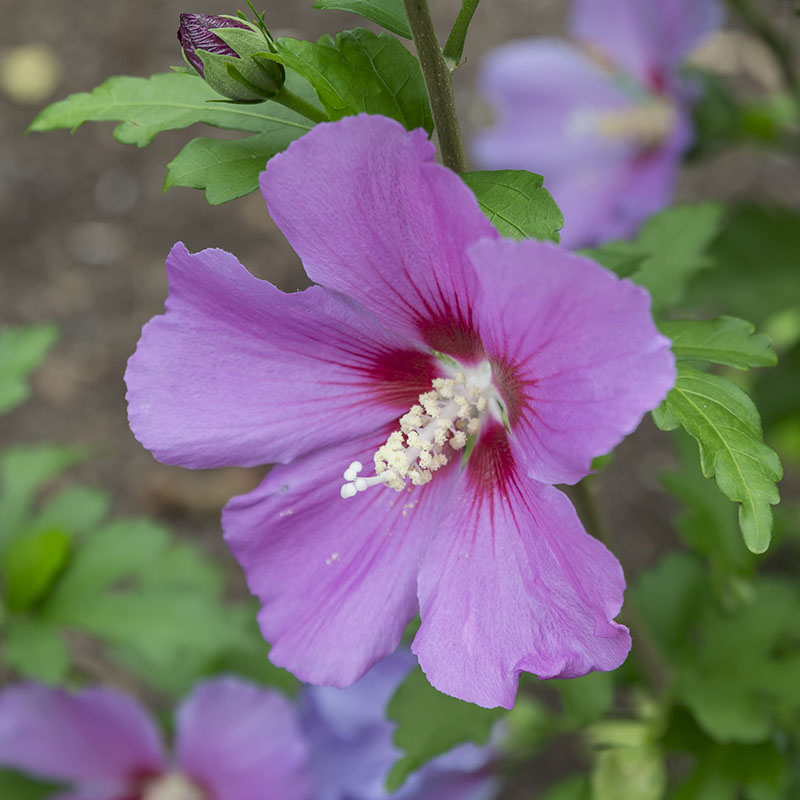

Hibiscus
Hibiscus
The genus Hibiscus is a large group of flowering plants in the mallow family. The name Hibiscus came from the Greek word “hibiskos” that meant “marshmallow.” The sticky root or stem of some plant in the mallow family was used at one time to make marshmallow confections. Some common names for hibiscus plants include hardy hibiscus, rose of Sharon, rose mallow, swamp mallow, and tropical hibiscus.
The hibiscus plant family includes several hundred species of plants that are native to warm temperate, subtropical, and tropical regions throughout the world. Both tropical and perennial hibiscus put on a big show in homes and in gardens. Blooms are typically very large, colorful, and popular as they attract crowds of hungry hummingbirds and other nectar-seeking creatures.
Perennial hibiscus plants can survive through the winter in zones 4 to 9, which means they are hardy in Chicago, and throughout northern Illinois. Some perennial hibiscus plants can grow to be quite large (up to 7 to 8 feet tall or more), and we are graced by the presence of their elegant, showy blooms in mid- to late summer. Flowers are typically white, pink, lavender, red, burgundy, or bicolored, and their stems tend to be woody.
Tropical hibiscus requires full sun, shelter from strong winds, and the warmth of summer. Their survival is dependent on surrounding temperatures remaining above 50 degrees Fahrenheit. Because of these needs, garden centers in northern Illinois tend to offer these plants in the spring, and they are grown as tender annuals outside through the warmest months of summer As fall settles in, it becomes essential to bring tropical hibiscus plants indoors. As long as they remain sheltered in the light of a sunny window playing the role of a houseplant until the thaw of spring, tropical hibiscus plants don't mind living a double life at all.
Meet some members of the hibiscus family

Hibiscus moscheutos 'Lord Baltimore'

Hibiscus rosa-sinensis 'Erin Rachel'
Hibiscus coccineus (Scarlet Rose Mallow)
The scarlet rose mallow produces deep red funnel-shaped flowers that are 6 to 8 inches across. A native plant, it grows in wetland areas such as swamps and marshes. Although it prefers similar conditions in the home garden, it is somewhat tolerant of dry soil if situated in a partially shaded spot. Narrow and upright, scarlet rose mallow can reach heights of 6 to 8 feet. Consider using it in a perennial border, along the edge of a pond or in a rain garden.
Hibiscus moscheutos (Rose Mallow, Swamp Rose)
This rose mallow produces flowers that are a whopping 6 to 12 inches wide. It’s a hardy perennial that grows like a large multi-stemmed shrub, which dies back to the ground in winter. Place it in full sun or part shade in soil that is high in organic matter. In troublesome wet areas, rose mallow can naturalize on a large scale. It can be used in the back of a border or as a specimen plant or grouped in a rain garden. Newer cultivars, like ‘Disco Bell’ are small plants that reach only 18 to 24 inches tall. The taller types seldom need staking because the stems are quite sturdy. Rose mallow is native to wetland areas on the eastern seaboard from Massachusetts to Florida and can be found as far west as Michigan and Alabama. See how they performed in the Garden’s plant evaluation.
Hibiscus rosa-sinensis (Tropical Hibiscus)
Tropical hibiscus is grown as a tender annual in northern Illinois. Garden centers tend to offer these plants in the spring. The trumpet-shaped flowers can be red, pink, orange, yellow, and bicolored. Plants can be grown in containers filled with soilless potting mix. Grow the plants in full sun and in a spot protected from strong wind. Bring plants indoors when night temperatures dip to 50 degrees in autumn. They can be placed in sunny rooms (bright light but not full sun) and grown as houseplants. Tropical hibiscus plants appreciate consistent moisture and high humidity—don’t let the roots dry out. Regular watering, misting, and fertilization during the growing season will keep them healthy. When grown as a houseplant, set the container on a bed of moist pebbles to increase humidity and mist the leaves once or twice a day during winter. Flowers last for one day and then fall off the plant.

Hibiscus syriacus 'DVPazurri'

Hibiscus syriacus 'Floru'
Hibiscus syriacus (Rose of Sharon)
If there was a list of “Grandma’s Great Garden Plants,” it’s certain that Rose of Sharon (Hibiscus syriacus) would be on it. This old-fashioned ornamental shrub is a prolific bloomer in August and September when most other shrubs have finished flowering. Other common names for Rose of Sharon include shrub hibiscus, althea, rose mallow, and swamp mallow.
Rose of Sharon has exotic flowers, woody stems, and a bushy form, but unlike its cousin tropical hibiscus, it is typically hardy in northeastern Illinois. The flowers also tend to be far more abundant than those of tropical hibiscus. Flowers can be single or double in several shades of red, pink, rose, violet-blue, white, and red-violet. Some cultivars have flowers with a contrasting eye at the center.
The shrub’s overall shape may be columnar, multi-stemmed, narrow, upright or vase-shaped. Depending on the cultivar, plants may reach 9 to 12 feet tall and 6 to 10 feet wide but more compact versions are available. Plants may be trained as a small tree or espalier. In spring, prune stems back leaving two or three buds, and larger flowers may result.
Rose of Sharon grows best in moist, well-drained soil that is amended with compost. Plants prefer full sun to part shade. (Best flowering occurs in full sun.) Unlike many plants that grow in northern Illinois, this shrub prefers hot weather and is tolerant of urban conditions. A bonus: Rose of Sharon tolerates alkaline soil, clay and road salt, and deer seem to leave it alone. Water plants consistently through late fall so that they are hydrated going into winter. If pruning is needed for shaping purposes, do it in early spring.
On the Grounds
Dozens of Hibiscus cultivars grow throughout the Garden’s displays.
Use the Plant Finder to discover locations.

